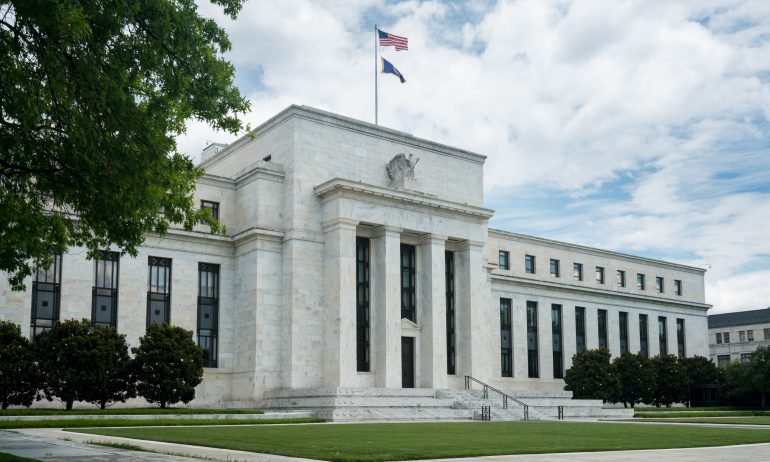Will There Be Another Interest Rate Increase in May?

Many or all of the products featured here are from our partners who compensate us. This influences which products we write about and where and how the product appears on a page. However, this does not influence our evaluations. Our opinions are our own. Here is a list of our partners and here's how we make money.
The investing information provided on this page is for educational purposes only. NerdWallet, Inc. does not offer advisory or brokerage services, nor does it recommend or advise investors to buy or sell particular stocks, securities or other investments.
The Federal Reserve has announced nine back-to-back interest rate increases since the start of 2022. The board is due to meet May 2-3, after which it may — or may not — announce interest rate increase No. 10.
For much of the past two years, interest rate increases have been a near certainty. The question has been how much the Fed will raise them.
But now, in light of slowing inflation and the recent collapse of Silicon Valley Bank, some investors are wondering whether the Fed will raise rates at all.
Why is the Federal Reserve raising interest rates?
The Fed has been raising interest rates to try to bring down excessive inflation.
“My colleagues and I understand the hardship that high inflation is causing, and we remain strongly committed to bringing inflation back down to our 2% goal,” Fed Chair Jerome Powell said in a news conference after the March 22 Fed meeting.
The latest reading of the consumer price index, an important measure of inflation, showed a 5% year-over-year inflation rate in March 2023. That’s lower than the peak CPI inflation rate of 9.1% from June 2022, but it’s still more than double the Fed’s target rate.
“Most economists and financial experts believe that raising rates will slow inflation, although they sometimes disagree on the reason why higher rates do that,” Ramon DeGennaro, a professor of finance at the University of Tennessee, said in an email interview.
Interest rate increases affect the economy in several ways. They increase the cost of debt, which discourages people and businesses from borrowing and spending money. For example, when interest rates go up, it’s more expensive to get a car or a home loan.
They also increase the interest rates on savings accounts and bonds, which encourages people to save rather than spend. As of April 2023, some high-yield savings accounts pay interest rates as high as 4.75%.
Both of these incentives decrease spending, and therefore, the demand for goods and services.
That keeps inflation — which is basically a fancy word for "price growth" — under control.
NerdWallet rating 4.9 /5 | NerdWallet rating 5.0 /5 | NerdWallet rating 4.1 /5 |
Fees $0 per online equity trade | Fees $0 per trade | Fees $0 per trade |
Account minimum $0 | Account minimum $0 | Account minimum $0 |
Promotion None no promotion available at this time | Promotion None no promotion available at this time | Promotion Get up to $700 when you open and fund a J.P. Morgan Self-Directed Investing account with qualifying new money. |
What are the odds of another interest rate increase?
The Chicago Mercantile Exchange’s FedWatch tool uses data from futures markets to estimate the odds of various interest rate change scenarios. As of May 1, the tool said there’s a 93.2% chance that the Fed will raise interest rates by 0.25%, and a 6.8% chance it will leave interest rates unchanged.
DeGennaro said that he is confident there will be a small increase.
“I would estimate the chance of a quarter-point increase at between 80% and 90%. If the Fed doesn’t hike rates, then it’ll hold rates at current levels,” DeGennaro said.
What would another interest rate increase do to markets?
In theory, higher interest rates are a negative for the stock market because they raise the cost of corporate borrowing. But in practice, the market’s reaction to an interest rate increase is a bit more complicated.
Many traders try to predict the impact of interest rate changes before they happen. Some make trades based on those predictions in the days leading up to interest rate decisions.
As a result, the market collectively “prices in” the interest rate changes expected by the public ahead of time.
In the case of the May Fed meeting, the market is expecting a 0.25% increase. The S&P 500 index traded up 0.91% in the week before the meeting, due in part to that expectation.
When an interest rate decision is actually announced, the market generally doesn’t have much of a reaction to the increase or decrease itself. Instead, it only has a big reaction if the decision is different from what was expected. That typically means a sell-off for a larger-than-expected increase, or a rally for a smaller-than-expected increase.
“I would expect a tepid response to a quarter-point increase,” DeGennaro said.
Where are interest rates headed next?
“Markets seem to be expecting maybe one more small rate increase and then a very slow decline for the next year or so,” DeGennaro said.
Powell made a similar prediction in the news conference after the March 22 Fed meeting.
“If the economy evolves as projected, the median [Federal Open Market Committee] participant projects that the appropriate level of the federal funds rate will be 5.1% at the end of this year, 4.3% at the end of 2024, and 3.1% at the end of 2025,” Powell said.
The coming shift from rising interest rates to falling interest rates could have significant effects on stocks, as some sectors of the stock market — such as the consumer discretionary, technology and utilities sectors — tend to perform better than others when rates are low.
But it’s too early to say with certainty exactly when rates will start to come down.
For now, investors will be waiting to see whether May 3 will mark the final interest rate increase of this cycle — or whether that final increase is already behind us.
On a similar note...





